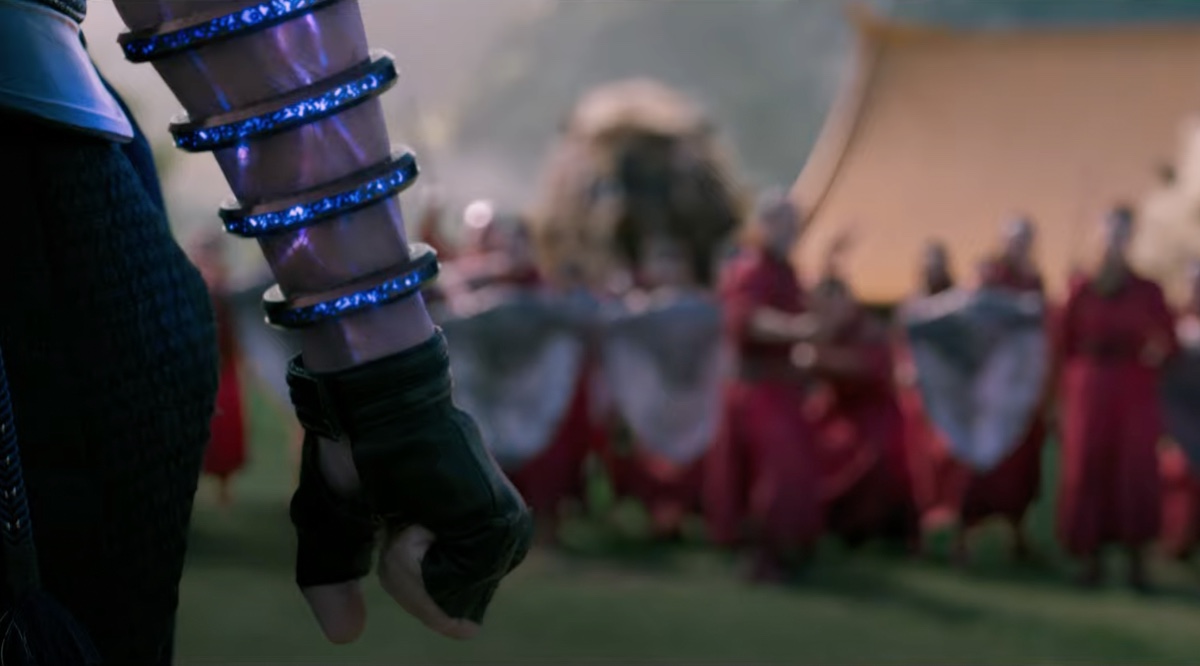With action sequences that are being hailed as some of the best in the history of the Marvel Cinematic Universe, Shang-Chi and the Legend of the Ten Rings is shaping up to overtake Black Widow as the biggest film of the pandemic.
A hit with critics and audience alike, many commentators are praising Shang-Chi’s cast and, in particular, the performance by Hong Kong screen legend Tony Leung Chiu-wai, for helping breathe new life into a familiar Marvel formula.
Given the huge challenge of presenting a film of this scale with a kung fu master as its central character, it was imperative the filmmakers delivered authentic fight scenes that could stand alongside the classics and showcase the best action the genre has to offer.
Tracing through China, Hong Kong and Hollywood, martial arts films have a history almost as long cinema itself. This history is on exciting display in Shang-Chi, and will cement the film’s position in kung fu cinematic history.
Birth of the kung fu genre and the first boom
Beginning with Shanghai productions in the 1920s, early martial arts films drew influence from Chinese opera and wuxia novels: narratives set in Ancient China focusing on heroes with supernatural martial arts abilities. Fight scenes in these early films emphasised flowing dramatised movements, but rarely showcased actual martial arts skills.
This changed with the transformation of Hong Kong cinema in the 1970s. Resisting the fantastical elements of the wuxia style, local studios Shaw Brothers and Golden Harvest put actual martial artists into their films.
With this move, the kung fu genre was born.
Popular titles of the time like Five Deadly Venoms (1978) and The 36th Chamber of Shaolin (1978) are classics, and the films of Bruce Lee brought kung fu to the world’s attention.
Lee’s intense and realistic fighting style, as shown in films like The Big Boss (1971) and Enter the Dragon (1973), sparked an international obsession with the art of kung fu — even as international fans often had to deal with poor-quality dubbing and bootleg videos.
After Lee’s untimely death in 1973, the genre morphed from showcasing ferocious physicality into a more acrobatic, comedy-infused approach, such as in Drunken Master (1978) and The Magnificent Butcher (1979) starring, respectively, Jackie Chan and his China Drama Academy “brother”, Sammo Hung.
Hong Kong cinema entered its Golden Age in the 1980 and ‘90s. At this time, contemporary kung fu classics like Chan’s Police Story (1985) complimented popular historical films such as Jet Li’s Tai Chi Master (1993) and Donnie Yen’s Iron Monkey (1993).
The second boom
In the late 1990s, around the time of Hong Kong’s handover to China, many of the industry’s leading figures made the move to Hollywood.
With films like Chan’s Rush Hour (1998) and Shanghai Noon (2000), and Li’s Romeo Must Die (2000) and The One (2001), English-speaking fans could finally see kung fu films on a big screen without the need for subtitles.
Celebrated martial arts choreographer Yuen Woo-ping also lent his talents to international productions, allowing kung fu to find its way into hits like The Matrix (1999) and Kill Bill (2003).
In 2000, the Chinese blockbuster Crouching Tiger, Hidden Dragon showed modern international audiences now had an appetite for the elaborate swordplay and gravity-defying wirework of wuxia films, and many stars returned to China to capitalised on the trend.
Jet Li’s Hero (2002) and Fearless (2006), as well as House of Flying Daggers (2004) and the first film to feature both Jackie Chan and Jet Li, Forbidden Kingdom (2008), all helped to redefine the martial arts film: bringing star power and global audiences to an industry that had, until then, largely received only local attention.
These Chinese-made films focused on producing elegant wuxia action dramas. In Hong Kong, kung fu was still going strong, largely thanks to Stephen Chow’s hugely popular comedies Shaolin Soccer (2001) and Kung Fu Hustle (2004), and Donnie Yen’s Ip Man (2008).
Shang-Chi: the first Asian superhero
In many ways, the character of Shang-Chi may be seen as the cultural successor to Bruce Lee. Created during the height of the global obsession with Lee’s films, the character of Shang-Chi first appeared in Marvel comics in December 1973 – just months after the death of the legendary actor.
Marvel’s “other kung fu hero”, Iron Fist from the 2017 Netflix series of the same name, was controversial. The star, Finn Jones, lacked martial arts experience, and the show was criticised for its “white saviour” narrative.
In light of this, the producers of Shang-Chi were keen to bring together a predominantly Asian and Asian-American cast and crew who could do justice to the first Asian superhero to headline a Marvel feature film.
This has paid off: Shang-Chi is being praised as both a classic Marvel superhero film, and an exceptional kung fu film in its own right.
Under fight director Andy Cheng and stunt coordinator Brad Allan, the film draws upon a range of different styles, including wing chun, Shaolin kung fu, bajiquan and hung ga stances, and the iron rings from which the film gets its title.
Hollywood has come a long way from declaring Lee “too authentic” to take the lead role in the original 1970s Kung Fu television series. Shang-Chi is likely to inspire a whole new generation of kung fu cinema fans.
Joyleen Christensen, Senior lecturer, University of Newcastle
This article is republished from The Conversation under a Creative Commons license. Read the original article.
Featured image: Marvel Studios

